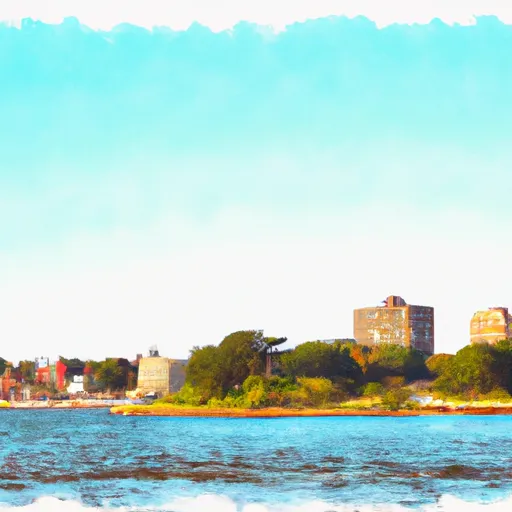-
 Snoflo Premium
Snoflo Premium
Get unlimited access to all our content
With no Ad interruptions! - Start Your Free Trial Login with existing account
Swampscott
Eden Index
Climate
9.5
•
Recreation
4.6
•
Community
3.9
•
Safeguard
6.4/10

Swampscott is a picturesque town located on the North Shore of Massachusetts, just 15 miles northeast of Boston. The town has a humid continental climate, characterized by hot summers and cold winters. Average summer temperatures range from the mid-60s to low 80s°F, while winters see temperatures in the mid-20s to mid-30s°F. The area receives around 45 inches of rainfall annually, with snowfall averaging around 45 inches as well.
Hydrologically, Swampscott is bordered by the Atlantic Ocean on its eastern side, offering beautiful sandy beaches and stunning coastal views. The town also has several ponds and wetlands, including the scenic Palmer Pond and Fisherman's Beach. These water bodies provide habitats for diverse flora and fauna, making Swampscott a haven for nature enthusiasts.
Outdoor recreation opportunities abound in Swampscott, with plenty of activities to suit various interests. Residents and visitors can enjoy swimming, sunbathing, and picnicking on beaches, as well as fishing and boating on the ocean or in the ponds. The town has several parks and nature reserves, such as the Swampscott Town Forest and Phillips Beach Reservation, offering hiking trails, bird-watching, and opportunities to explore the area's natural beauty.
What is the Eden Index?
The Snoflo Eden Index serves as a comprehensive rating system for regions, evaluating their desirability through a holistic assessment of climate health, outdoor recreation opportunities, and natural disaster risk, acknowledging the profound impact of these factors on livability and well-being.
Climate Health Indicator (CHI): 9.5
Swampscott receives approximately
1222mm of rain per year,
with humidity levels near 72%
and air temperatures averaging around
11°C.
Swampscott has a plant hardyness factor of
6, meaning
plants and agriculture in this region thrive during a short period during spring and early summer. Most
plants will die off during the colder winter months.
By considering the ideal temperature range, reliable water supplies, clean air, and stable seasonal rain or snowpacks, the Climate Health Indicator (CHI) underscores the significance of a healthy climate as the foundation for quality living.
A healthy climate is paramount for ensuring a high quality of life and livability in a region, fostering both physical well-being and environmental harmony. This can be characterized by ideal temperatures, reliable access to water supplies, clean air, and consistent seasonal rain or snowpacks.
Weather Forecast
Streamflow Conditions
Massachusetts-Rhode Island Coastal
Area Rivers
Massachusetts-Rhode Island Coastal
Snowpack Depths
Massachusetts-Rhode Island Coastal
Reservoir Storage Capacity
Massachusetts-Rhode Island Coastal
Groundwater Levels
Recreational Opportunity Index (ROI): 4.6
The Recreational Opportunity Index (ROI) recognizes the value of outdoor recreational options, such as parks, hiking trails, camping sites, and fishing spots, while acknowledging that climate plays a pivotal role in ensuring the comfort and consistency of these experiences.
Access to outdoor recreational opportunities, encompassing activities such as parks, hiking, camping, and fishing, is crucial for overall well-being, and the climate plays a pivotal role in enabling and enhancing these experiences, ensuring that individuals can engage in nature-based activities comfortably and consistently.
Nearby Ski Areas
Catastrophe Safeguard Index (CSI):
The Catastrophe Safeguard Index (CSI) recognizes that natural disaster risk, encompassing floods, fires, hurricanes, and tornadoes, can drastically affect safety and the overall appeal of an area.
The level of natural disaster risk in a region significantly affects safety and the overall livability, with climate change amplifying these risks by potentially increasing the frequency and intensity of events like floods, fires, hurricanes, and tornadoes, thereby posing substantial challenges to community resilience and well-being.
Community Resilience Indicator (CRI): 3.9
The Community Resilience Indicator (CRI) recognizes that education, healthcare, and socioeconomics are crucial to the well-being of a region. The CRI acknowledges the profound impact of these elements on residents' overall quality of life. By evaluating educational resources, healthcare accessibility, and economic inclusivity, the index captures the essential aspects that contribute to a thriving community, fostering resident satisfaction, equity, and social cohesion.

